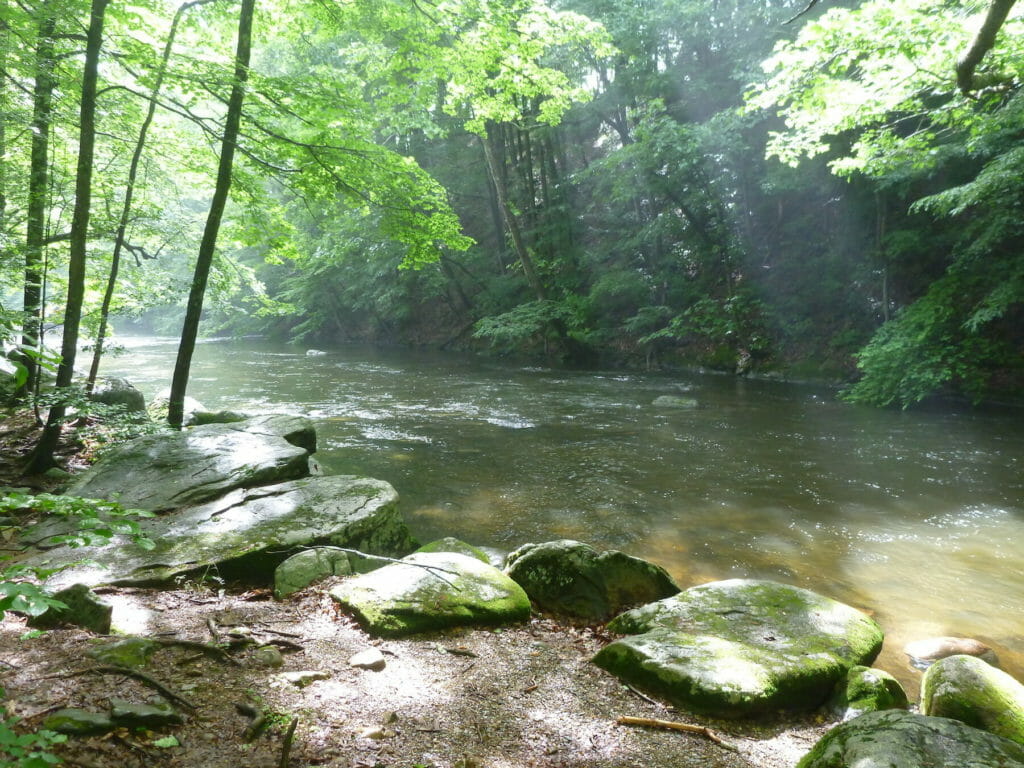
The Upper Delaware Watershed is home to many of New Jersey’s best trout fishing waters, including the Musconetcong River. Here TU has removed barriers to aquatic organism passage and strategically restored over 6 miles of habitat in degraded areas to increase available habitat, food, and water quality for trout, especially native brook trout.
The success achieved in the Musconetcong River has provided TU the opportunity to expand its area of influence in the Basin. This recent expansion is being fueled by a watershed-wide approach to restore, reconnect, and reintroduce native brook trout patches in Lopatcong Creek, a high-quality spring creek, the Paulins Kill and Pequest River, as well as Flat Brook, a brook trout stronghold in the northern most part of the state.
The Upper Delaware is one of three major watersheds in New Jersey that houses approximately one-third of the state’s trout production waters and is home to the highest percentage of wild trout streams of any watershed in New Jersey. Working cohesively with all 10 NJTU chapters, TU also increases angler access, engages local communities through recreation and nature, and advocates for the protection of NJ’s state fish, the brook trout.
Working collaboratively with local watershed, conservation, and land protection organizations and over 3,400 NJTU members TU has put an emphasis on native brook trout and wild brown trout restoration. TU has planted over 2 miles of stream banks with native trees and shrubs in the last year alone to cool water temps and stabilize banks.
TU enhances in-stream habitat and macroinvertabrate life through the addition of large wood and boulder structures, reconnects optimal habitat through dam removal and culvert replacement, and restores natural watershed hydrology through floodplain reconnection. TU is also making history in NJ by partnering with the Division of Fish & Wildlife to pilot the first-ever reintroduction of heritage strain brook trout to 3 sub-watersheds.
These projects will be used to educate and connect communities to their local environment and increase water-quality for the 15 million who rely on the Delaware for drinking water, making the brook trout the symbol of clean water.
Since the program began in New Jersey, TU has restored over 6 miles of habitat and partnered on multiple dam removals that to reconnected 6 miles of stream on the Musconetcong River, seeing the first ever migration of American shad, a species that is blossoming as a target species to anglers. Since the expansion of the program in 2016, TU has restored over 3 miles of habitat and riparian forest across four sub-watersheds of the Delaware.
In 2019 TU assessed all road-stream crossings in the Flat Brook watershed for aquatic organism passage and is now working with the state’s Bureau of Freshwater Fisheries to prioritize replacement projects that will improve brook trout access to spawning habitat and thermal refugia. Additional planned projects include 2.5 miles of in-stream and riparian restoration along the Lopatcong— a spring creek hosting wild brook and brown trout— and the state’s first reintroduction of native brook trout to a Musconetcong River tributary.
TU continues to hold multiple stream clean-ups, trout in the classroom programs, and citizen science monitoring with NJTU chapters and local communities.
Staff Contact
Keith Fritschie, Upper Delaware River Coordinator, keith.fritschie@tu.org

